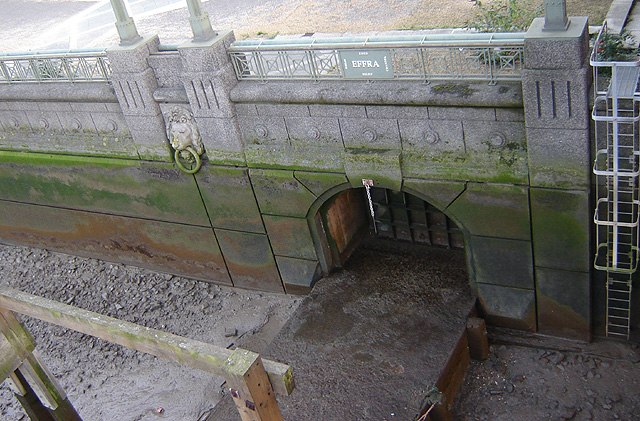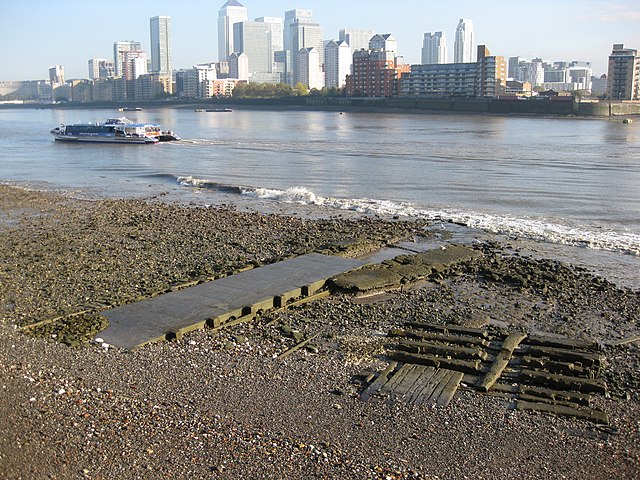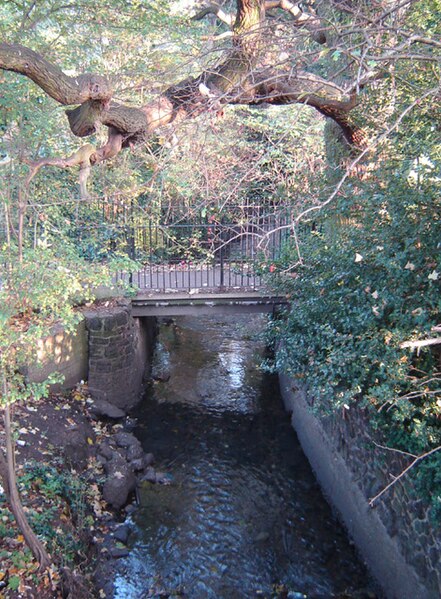The River Fleet is the largest of London's subterranean rivers, all of which today contain foul water for treatment. It has been used as a sewer since the development of Joseph Bazalgette's London sewer system in the mid-19th century with the water being treated at Beckton Sewage Treatment Works. Its headwaters are two streams on Hampstead Heath, each of which was dammed into a series of ponds—the Hampstead Ponds and the Highgate Ponds—in the 18th century. At the southern edge of Hampstead Heath these descend underground as sewers and join in Camden Town. The waters flow 4 miles (6 km) from the ponds.
Entrance to the Fleet River as it emerges into the Thames, by Samuel Scott, c. 1750
The mouth of the River Fleet in 2002, appearing as a drainage outlet (obscured in shadow) in the embankment wall beneath Blackfriars Bridge
Bridge over the New Canal at Holborn: illustration from Alexander Pope's Dunciad (1728). The bathers are included in satirical allusion to the poor quality of the water.
Subterranean rivers of London
The subterranean or underground rivers of London are or were the direct or indirect tributaries of the upper estuary of the Thames that were built over during the growth of the metropolis of London. They now flow through culverts, with some of them integral parts of London's sewerage system and diverted accordingly.
The position of a mouth of the Effra in the 13th century.
The culverted mouth of the Earl's Sluice at Deptford Wharf
The Moselle on the surface flows through Tottenham Cemetery on its way to the Lea.






